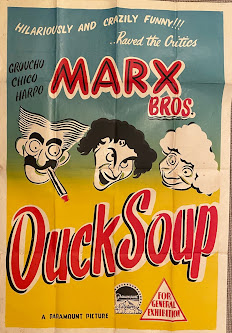The United States has the highest per capita rate of incarceration in the world -- higher than Rwanda, more than three times the rate in Iran and nearly five times the rate in Great Britain. The Sentencing Project writes:
More than 60% of the people in prison [in the U.S.] are now racial and ethnic minorities. For Black males in their twenties, one in every eight is in prison or jail on any given day. These trends have been intensified by the disproportionate impact of the "war on drugs," in which three-fourths of all persons in prison for drug offenses are people of color.These facts are not contestable. To professional criminologists and others with an interest in criminal justice policy, they are well known, commonplace.
It's difficult to argue that this so-called race to incarcerate has had much if any positive effect on rates of crime -- particularly violent crime. The U.S. murder rate, for example, is unacceptably high by any standard. The prevalence and availability of handguns, various aspects of the traffic in illegal drugs and the dehumanizing effects of lengthy periods of incarceration, among other things, contribute to keeping the murder rate up. It is quite likely, in other words, that the very policies that have led us to mass incarceration are actually doing more to sustain the murder rate than to lower it.
These complex and thorny issues were on display late last month as the U.S. Supreme Court considered the problem of overcrowding in the State of California's prison system. Notoriously harsh sentencing policy there has increased the inmate population by nearly sevenfold since 1980. That population is now twice the capacity for which California's prisons were designed, crippling prison administrators' ability to provide necessary medical care and psychiatric services. Disease is rampant. In some instances, over 50 prisoners must share a single toilet. Seriously mentally ill prisoners in need of psychiatric treatment are made to wait for many hours in cages the shape and size of telephone booths. There is nearly one suicide per week in the prison system. Serious, life-threatening illnesses go undiagnosed and untreated.
This humanitarian disaster has gone on for more than a decade, leading a lower federal court to order California to release some 46,000 prisoners over the course of the next two years in order to alleviate the crushing effects of overcrowding on the provision of medical and psychiatric services.
By the slenderest of margins (5-4), the Supreme Court upheld that order. Declaring that the "medical and mental health care provided by California's prisons falls below the standard of decency that inheres in the Eighth Amendment," the Supreme Court ordered California to "implement the [release] order without delay." The human rights community breathed a sigh of relief.
As always, it's actually about the money. In happier fiscal times, the State of California would have gladly chosen to build itself out of its crisis of overcrowding. In fact, California argued to the end that planned construction of new prison facilities would solve the problem and make unnecessary the accelerated release of convicted prisoners. With judicious understatement -- after all, California's governor declared a state of fiscal emergency at the beginning of this year and the state's proposed prison construction has repeatedly been postponed -- the court noted that that proposed solution was not a "realistic possibility."
Take away the fiscal emergency, though, and the California prison case would never have reached the Supreme Court. Instead, there'd be a boom in prison construction.
Proof of that may be found here in Cook County, where our overcrowded county jail has helped to pad the budgets of a succession of county sheriffs.
Since 1982, the jail has been subject to a federal court injunction forbidding the sheriff from assigning inmates to sleep on the floors. In the almost three decades since that injunction went into effect, the county sheriff has never quite succeeded in getting all of the inmates into assigned beds. In those decades, though, the jail's population has more than doubled, a massive new Division 11 of the jail has been constructed and the jail's staff has grown dramatically. The federal injunction has paved the way to financing all of this. For years, the county has walked a fine line between full compliance (which could end the injunction) and major defiance (which would draw the interest of the media and the wrath of the federal judiciary). So long as the problems are under the radar, the federal cap on inmate population at the Jail has been the county sheriff's best argument for adding new personnel and construction projects to his budget.
California has hit the fiscal wall to a degree not yet seen in Cook County. That state's money woes forced at least a moment's reflection on some of the tough choices in criminal justice policy.
But the real issue wasn't even on the table. California proposed a variety of alternatives to releasing prisoners. It never suggested reconsidering the root causes of prison overcrowding, first among them the draconian sentencing policies that send non-violent drug offenders to prison for lengthy terms and require natural life for thrice-convicted felons whose "third strike" is no more serious than the theft of video tapes or golf clubs.
The Supreme Court's decision sounds dramatic: thousands of convicted felons must be set free before their sentences have expired. In truth, though, Californians will barely notice the difference. The releases will be spread out over at least two years. Those in charge will not have to look hard to find non-violent offenders to set free. Criminologists will argue about whether a few additional crimes might be attributed to last month's decision.
With luck, conditions for the sick and the mentally ill in California's prisons will improve a bit over time. That's not a small victory.
The hard questions will remain to vex us on another day.







0 comments :
Post a Comment